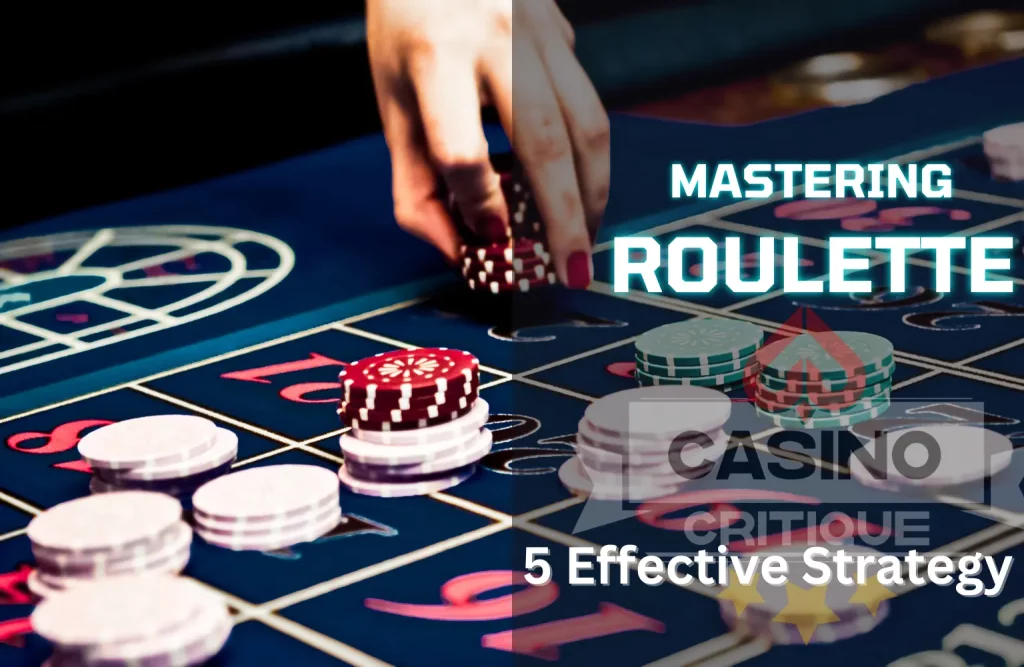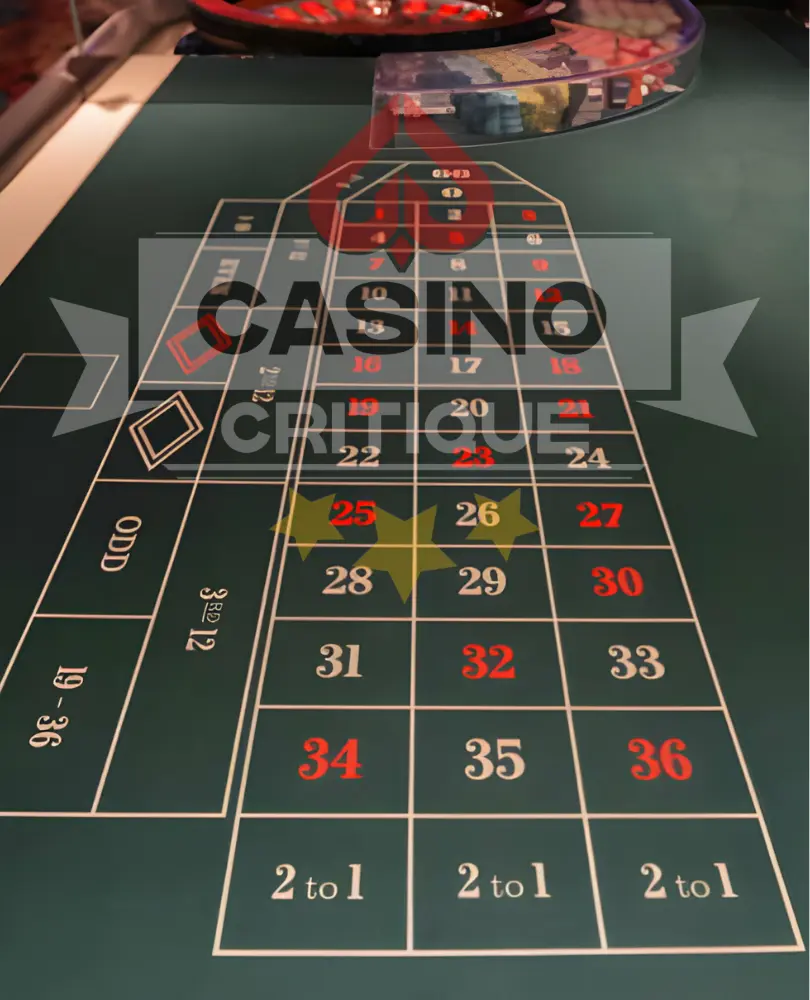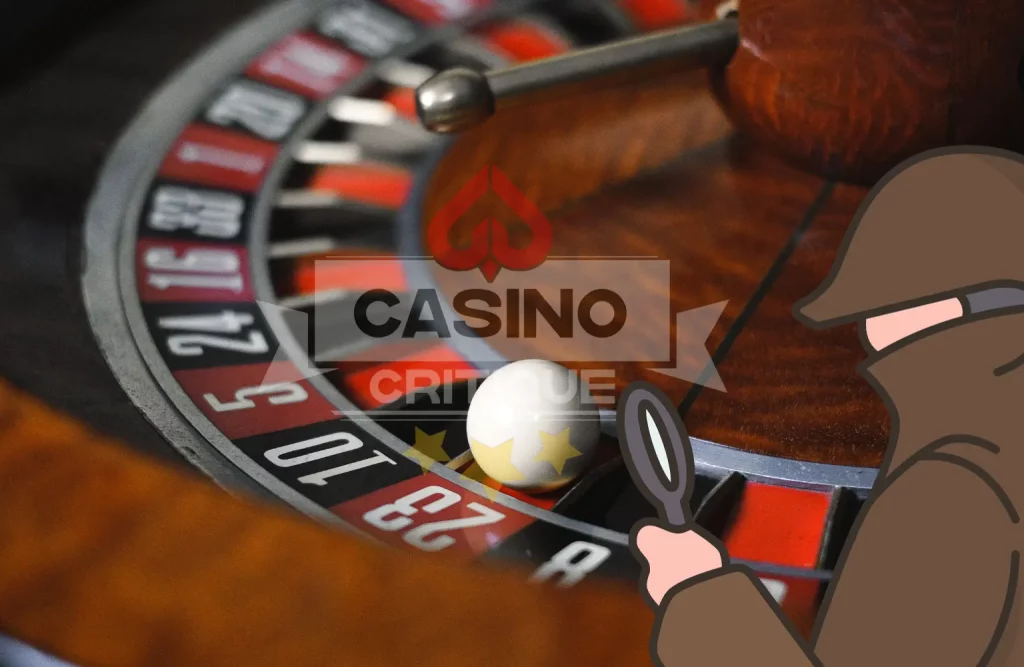In order to get good at roulette, players often try out different tactics, each of which has its own way of betting and managing risk. This piece will talk about all of these best roulette strategies and try to figure out which one is the absolute best for you.
Roulette is often called the “Queen of Casino Games,” and players have been drawn to it for generations because it combines style and chance. It’s exciting to watch the wheel spin and the ball dance along the holes. But there is a simple truth behind the draw of this old game: roulette is a game of pure chance, and each spin is different from the last.
If you want to consistently win at roulette, you need to understand that there are no foolproof casino strategies. Roulette is a game of chance. Every time you spin the wheel, anything could happen. The house always has an edge.

Here are some popular strategies which we can master in our Roulette sessions:
Table of Contents
1. Martingale System
One of the most effective roulette strategy is the Martingale System. The idea behind it is that you should double your bet every time you lose, with the hope that one win will finally make up for all your losses and give you a profit equal to your initial bet. The method is simple and easy to understand, which is one reason why many players like it.
This classic roulette winning tactic involves doubling your bet after each loss on even-money bets (e.g., red/black). For instance, a $5 loss leads to a $10 bet; a win recovers all losses plus a small profit.
Pros: Easy to follow, effective for quick recovery.
Cons: Risky during long losing streaks; table limits can disrupt progression.
Best For: High rollers on European roulette (2.7% house edge).
Example: Start with $5 on black. If you lose, bet $10, then $20, until you win, recovering losses plus $5.

Martingale System vs. Other Strategies: Determining the Best Roulette Strategy
The Martingale System is not always better than other ways to bet; it’s just different. It has the ability to get back losses quickly, but it comes with a lot of risk. Some players may find that the Paroli, D’Alembert, or Fibonacci methods are less risky and better for them because they aim to take advantage of winning streaks or slowly make up for losses. Ultimately, the best roulette strategy is the one that suits your individual preferences and risk tolerance, so it’s important to explore and understand various systems before deciding on the right one for your gameplay.
2. Labouchere System
Set a profit goal (e.g., $30) and create a sequence (e.g., 2-3-5-4). Bet the sum of the first and last numbers, crossing them off after a win or adding the bet after a loss.
Pros: Customizable, goal-oriented.
Cons: Complex; losses can grow quickly.
Best For: Disciplined players with tracking skills.
Example: Bet $6 (2+4), win, cross off 2 and 4, bet $8 (3+5).
3. D’Alembert System
The D’Alembert System is a way to bet on table games like roulette and other gambling games. People often think of the D’Alembert System as a safer, more conservative approach than the Martingale or Paroli Systems. The idea behind it is that when you lose, you should raise your bet by one unit and when you win, you should lower it by one unit. The goal is to slowly get back the money you lost and make a small profit along the way.
Increase your bet by one unit after a loss and decrease by one after a win, focusing on even-money bets.
Pros: Low risk, simple to implement.
Cons: Requires multiple wins to break even.
Best For: Beginners prioritizing steady play.
Example: Bet $10, lose, bet $11, win, bet $10.
Is D’Alembert the Best Roulette Strategy Among All?
The D’Alembert System may or may not be better than other plans depending on how you play and how willing you are to take risks. It’s often chosen by players who like to bet in a more controlled and cautious way. As opposed to risky methods like the Martingale, this one doesn’t put you at as much risk.
But the D’Alembert System has some problems as well. For instance, it might not be as good at taking advantage of winning runs as the Paroli System. The approach you choose should fit with your own goals and preferences. When searching for the best roulette strategy, it’s important to assess your risk tolerance and desired playing style to determine the most suitable approach for your roulette adventures.
4. Fibonacci System
The Fibonacci System is a way to bet that is based on the famous Fibonacci sequence, in which each number is the sum of the two numbers that came before it. For example, 1, 1, 2, 3, 5, 8, 13, 21, and so on. When you’re gambling, the Fibonacci formula helps you figure out how much to bet. This method is usually used for even-money bets in games like roulette. It’s meant to help people recover their losses more slowly than bold methods like the Martingale.
Inspired by the Fibonacci sequence (1, 1, 2, 3, 5, 8…), you bet the sum of the two previous bets after a loss and move back two steps after a win.
Pros: Safer than Martingale, gradual progression.
Cons: Slow recovery during extended losses.
Best For: Players with moderate budgets seeking controlled risk.
Example: Bet $1, lose, bet $1, lose, bet $2, win, then bet $1 again.
Is Fibonacci the Best Roulette Strategy in the Game?
Determining if the Fibonacci System suits you as the best roulette strategy depends on your risk tolerance and playing style. It’s commonly favored by players who prefer a more controlled and structured betting approach, aiming to gradually recoup losses without placing large bets all at once.
While it’s less risky than aggressive strategies such as the Martingale, it may not be as effective at capitalizing on winning streaks like the Paroli System. Your chosen approach should align with your unique goals and personal preferences.
5. James Bond Strategy
The James Bond Strategy is a way to bet on roulette that was made just for that game. People named it after the fictional spy James Bond, who liked to gamble a lot. Using this technique, you bet on a group of numbers that cover a lot of the roulette table. This increases your chances of winning every time the ball comes up. Usually, the strategy calls for three bets: one on a high number range (19–36), one on a six-line (13–18), and one on 0 or 00, based on whether you’re playing European or American roulette.

Bankroll Management
Effective bankroll management is essential when using the James Bond Strategy:
- Determine a Budget: Decide ahead of time how much money you are ready to spend on gambling. The amount on your budget should be something you can lose without going into serious debt.
- Allocate Betting Units: Split your money up into pieces for betting. You will need enough units to meet the three bets that the strategy calls for.
- Stick to Your Limits: Stick to your budget once you’ve decided how many units you’ll use. Don’t try to chase loses or raise your bets more than you planned.
Risks Involved
When compared to other gaming systems, the James Bond Strategy is one of the safer ones. However, it still comes with risks:
- Payout vs. Risk: The technique can be used on a lot of the roulette table, but each bet within it pays out differently. The big number bet pays out at a rate of 1:1, the six-line bet pays out at a rate of 5:1, and the 0 or 00 bet pays out at a rate of 35:1. So, the money you might win might not always be enough to cover the money you lose.
- Lack of Guaranteed Profit: The James Bond Strategy does not promise long-term profits like other betting methods do. Even though it makes betting more organised, it doesn’t change the chance of the game itself.
Is James Bond the Best Roulette Strategy of All?
How well the James Bond Strategy works for you depends on your goals and how much risk you are willing to take. It’s different because it takes up a lot of space on the roulette table, making it appealing to players who want to share their bets and increase their chances of winning every time. However, it’s essential to consider that the best roulette strategy for you might not necessarily be the James Bond method, as other strategies like the Martingale or Paroli offer different approaches and levels of risk that may better align with your preferences and gameplay style.

6. Hedge Betting
Hedge betting is a strategy used in roulette where players bet on different outcomes of the same game in order to lower their general risk and possibly win some money. The idea behind hedge betting is to make up for the chance of losing by winning more often and in smaller amounts. People often use it to make themselves feel safe and lessen the effect of bad results. To hedge bet in roulette, do the following:
Types of Hedge Bets
- Covering Multiple Outside Bets: In this popular type of hedge betting, players bet on more than one outside bet at the same time. You can bet on outside events like Red/Black, Odd/Even, or High/Low. Like, you could bet on both red and black numbers. This doesn’t get rid of the house edge, but it does make it more likely that you’ll win something every time you spin.
- Combining Inside and Outside Bets: Combining inside bets (on specific numbers or small groups of numbers) with outside bets is another way to hedge your bets. Like, you could bet on a single number (an inside bet) and a colour or a spread of numbers at the same time (an outside bet). This approach lets you make both high-risk and low-risk bets.
Variation Betting
Variation betting, often considered one of the best roulette strategy, also called variable betting or dynamic betting, is a way to play roulette and other gambling games where players change their bets based on how previous spins turned out. The point of variation betting is to change your bets based on how the game is going at the moment. This way, you can take advantage of trends or keep your losses to a minimum during losing runs. What you need to know about variation betting in roulette:
- Start with a Base Bet: You start with a base bet, which is the smallest amount of money you’re willing to risk. The base bet can change based on your cash and how much risk you are willing to take.
- Adjust Your Bets Based on Outcomes: You change the size of your bet after each spin based on how the last spin or set of spins went. It’s possible to make the changes after wins or losses.
- Win-Progression Variation: If you win a spin, you might raise your bet for the next spin, usually by a certain amount, like 25%, 50%, or even twice your bet. The goal is to build on a winning run and possibly make as much money as possible.
- Loss-Regression Variation: Again, if you lose a spin, you might bet less on the next one, usually by a certain amount. This strategy is meant to keep your bankroll safe and cut down on losses during a losing run.
- Flat Betting Variation: Some variations of betting involve keeping the size of your bet the same no matter what happens. This strategy is meant to keep you from increasing your bets when you’re losing, but it might not work as well when you’re winning.
- Observation and Adaptation: To be good at variation betting, you need to pay close attention to how the game is currently trending. Based on how they think the game is going, players have to decide when to raise or lower their bets.
- Bankroll Management: When using variation betting, it’s important to keep track of your money well. Make clear rules about how much you’ll bet and how little you’ll bet, and then stick to those rules.
- Risk and Reward: How you change your bets affects the risk and possible return of variation betting. If you raise your bets after a win, you might make more money when you’re winning, but you might lose more when you’re losing. lowering your bets after a loss can help protect your bankroll, but it could also stop you from winning when you’re on a winning run.
- No Guarantee of Success: Like all other betting tactics, variation betting doesn’t change the odds of the game itself. There is a structured way to bet with it, but it doesn’t promise long-term profits.
Non-Progressive Roulette Strategies
Non-progressive systems use fixed bets, minimizing risk but offering smaller rewards, ideal for conservative players.
7. James Bond System
Cover 67% of the wheel by betting $140 on high numbers (19–36), $50 on 13–18, and $10 on zero.
Pros: Broad coverage, potential for frequent wins.
Cons: High initial stake ($200); losses are steep.
Best For: Risk-tolerant players seeking quick payouts.
Example: A win on 19–36 yields $80 profit; zero pays $160.
8. 3/2 System
Place three units on red and two on the second column, covering 70% of the wheel.
Pros: High win probability, straightforward.
Cons: Overlapping bets reduce payouts.
Best For: Players balancing risk and coverage.
Example: Bet $3 on red, $2 on second column; a win on both nets $1 profit.
9. Romanowsky System
Place corner bets to cover 32 numbers, achieving an 86.5% win chance.
Pros: Exceptional coverage, consistent small wins.
Cons: Low payouts, complex bet placement.
Best For: Advanced players mastering table layouts.
Example: Bet $1 on four corner bets; a win pays $2 profit.
Choose the Best Roulette Strategy for You
Finding the best roulette strategy depends on how much risk you are willing to take, your goals, and your bankroll. You could use this guide as a road map to help you make this choice. You can make a choice that fits your unique game style if you know what you like, set clear goals, think about your resources, and try out different types of strategies. Remember that being able to handle yourself and gambling responsibly are important parts of a good roulette plan.
500 FREE spins
Casino Critique players only
Wager $200 get 50 free spins, $500 get 150, and $1000 get 300 free spins!
5% rakeback + 200% first deposit bonus
Casino Critique players only. All other regular promotions included
When you play roulette or any other casino game, it’s important to remember that the house always has an edge and that the results are decided by luck. There is no best roulette strategy or system that can change the odds of the game or promise that you will always win. What works best for you in roulette might not work at all for someone else.
Being careful when you gamble is the best way to win at any type of gambling. Clear out your budget, play within your means, and never try to win back money you’ve lost.
As a form of entertainment, enjoy roulette. If you decide to use any of the best roulette strategies we’ve talked about, make sure you know the risks. Different roulette strategies, such as the Martingale, Paroli, D’Alembert, Fibonacci, James Bond, Hedge Betting, and Variation Betting, offer different ways to play. Each has its own amount of risk and possible reward.
If you want to find the best roulette plan for you, feel free to try out different strategies. Just remember to stay disciplined and know when to stop.
Remember that gambling should be a fun activity, and any losses should be seen as the price you pay for having fun. If your gambling is getting out of hand or costing you a lot of money, you should get help from tools for responsible gambling. Finally, playing roulette responsibly and knowing what you’re doing is the best way to make sure you have a good time and stay in control.






























As with any form of gambling, it’s essential to approach it responsibly, setting limits and enjoying the experience for its entertainment value rather than solely focusing on winning.
Thank you Misha. It is indeed true and unfortunately players can not control their emotion.
The positivity and optimism conveyed in this blog never fails to uplift my spirits Thank you for spreading joy and positivity in the world
You are welcome.